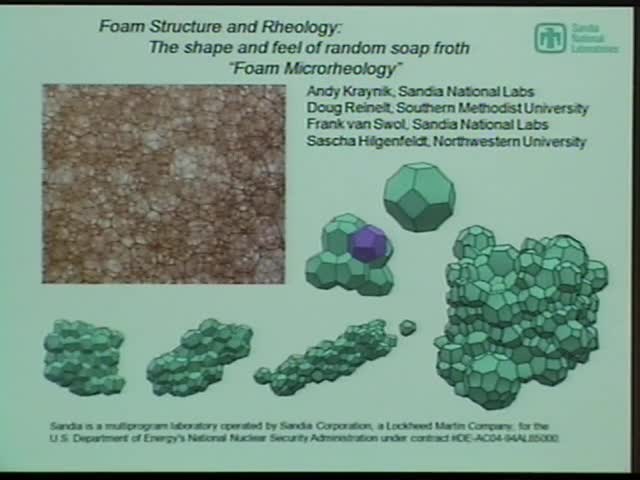Foam structure and rheology: The shape and feel of random soap froth
Presenter
October 15, 2009
Keywords:
- Rheology
MSC:
- 76A05
Abstract
Soap froth—the quintessential foam—is composed of polyhedral gas bubbles separated by thin liquid films. Why do foams have a shear modulus and yield stress, which we usually associate with solids? How are the bubbles shaped and how are they packed? These and other questions have been explored through simulations with the Surface Evolver, a computer program developed by Brakke. The calculations are in excellent agreement with seminal experiments by Matzke (1946) on the foam structure and shear modulus measurements by Princen and Kiss (1986). The connection between elastic-plastic rheology and foam structure involves intermittent cascades of topological transitions; this cell-neighbor switching is a fundamental mechanism of foam flow. The structure and rheology of wet foams, which have finite liquid content, will also be discussed.
Sandia is a multiprogram laboratory operated by Sandia Corporation, a Lockheed Martin Company, for the United States Department of Energy’s National Nuclear Security Administration under contract DE-AC04-94AL85000.
